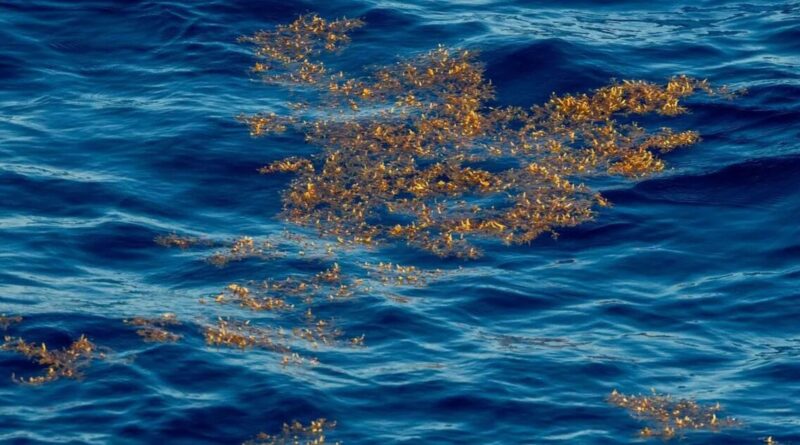Sargasso Sea: The 2 million sq mi sea with no land borders | World | News
There is a two million square mile sea with no land borders that is surrounded by just one ocean.
The Sargasso Sea is a region of the Atlantic Ocean bounded by four currents forming an ocean gyre. Unlike all other regions called sea, it has no land boundaries.
The sea is bound by the Gulf Stream, the North Atlantic Current, the Canary Current, and the North Atlantic Equatorial Current. Together, the four form a clockwise-circulating system of ocean currents that are known as the North Atlantic Gyre.
Ocean water in the Sargasso Sea is distinctive for its deep blue colour and exceptional clarity, with underwater visibility of up to 60 metres.
It is different from other parts of the Atlantic Ocean by its characteristic brown Sargassum seaweed, which floats on the surface in a large belt. Renowned marine biologist Dr Sylvia Earle called it a “golden floating rainforest”.
The two million square mile sea plays a large role in the migration of American and European eels, with them laying their eggs within the waters and the young making a three-year journey back to the UK.
It is also believed that young loggerhead sea turtles travel there on the Gulf Stream and use the seaweed to hide from predators until they are mature. Whales – most notably sperm and humpbacks – also migrate through it, as do tuna and other types of fish.
Christopher Columbus first documented encounters with the sea’s strange mats of Sargassum in his expedition diaries back in 1492.
He wrote of his sailors’ fears that the seaweed would entangle them and drag them to the ocean floor, or that the windless periods (doldrums) they faced might prevent them from returning to Spain.
The body of water has since captured the public imagination, and so is seen in a wide variety of literary and artistic works and in popular culture.
It is often depicted in fiction as a dangerous area where ships are mired in weed for centuries, unable to escape, especially due to its association with the infamous Bermuda Triangle.
It features in Jules Verne’s Twenty Thousand Leagues Under the Seas and William Hope Hodgson’s The Boats of the “Glen Carrig”.
The Sargasso Sea, like many unique ocean ecosystems, is under threat from overfishing, the industrialisation of the oceans from oil drilling and the new threat of deep-sea mining. It is also home to the North Atlantic Garbage Patch.





